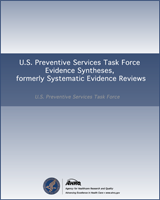NCBI Bookshelf. A service of the National Library of Medicine, National Institutes of Health.
Lozano P, Henrikson NB, Dunn J, et al. Lipid Screening in Childhood and Adolescence for Detection of Familial Hypercholesterolemia: A Systematic Evidence Review for the U.S. Preventive Services Task Force [Internet]. Rockville (MD): Agency for Healthcare Research and Quality (US); 2016 Aug. (Evidence Syntheses, No. 141.)

Lipid Screening in Childhood and Adolescence for Detection of Familial Hypercholesterolemia: A Systematic Evidence Review for the U.S. Preventive Services Task Force [Internet].
Show detailsTable 1MEDPED Criteria (United States)*1
| Age | Total Cholesterol (LDL-C) concentrations, mg/dL | |||
|---|---|---|---|---|
| First-degree relative | Second-degree relative | Third-degree relative | General population | |
| <18 | 220 (155) | 230 (165) | 240 (170) | 270 (200) |
| 20 | 240 (170) | 250 (180) | 260 (185) | 290 (220) |
| 30 | 270 (190) | 280 (200) | 290 (210) | 340 (240) |
| 40 + | 290 (205) | 300 (215) | 310 (225) | 360 (260) |
- *
Cutoffs for 98% specificity and 54% to 88% sensitivity.
Abbreviation: LDL-C=low-density lipoprotein cholesterol.
Table 2Simon Broome Criteria (United Kingdom)2
| Total cholesterol (LDL-C) of 290 mg/dL (190 mg/dL) in adults or 260 mg/dL (155 mg/dL) in pediatrics (age <16 years) AND | |
| Definite FH |
| Probable FH |
| Possible FH |
Abbreviations: LDL-C=low-density lipoprotein cholesterol, MI=myocardial infarction, FH=familial hypercholesterolemia.
Table 3Dutch Criteria (The Netherlands)3
| 1 point | First- degree relative with premature cardiovascular disease or LDL-C >95th percentile, or personal history of premature peripheral or cerebrovascular disease, or LDL-C between 155 and 189 mg/dL |
|---|---|
| 2 points | First-degree relative with tendinous xanthoma or corneal arcus, or first- degree relative child (<18 years) with LDL-C >95th percentile, or personal history of coronary artery disease |
| 3 points | LDL-C between 190 and 249 mg/dL |
| 4 points | Presence of corneal arcus in patient age <45 years |
| 5 points | LDL-C between 250 and 329 mg/dL |
| 6 points | Presence of a tendon xanthoma |
| 8 points | LDL-C >330 mg/dL or functional mutation in the LDLR gene |
Abbreviations: LDL-C=low-density lipoprotein cholesterol, LDLR=low-density lipoprotein receptor, FH=familial hypercholesterolemia.
Definite FH (≥8 points); probable FH (6–7 points); possible FH (3–5 points).
References
- 1.
- Williams RR, Hunt SC, Schumacher MC, et al. Diagnosing heterozygous familial hypercholesterolemia using new practical criteria validated by molecular genetics. Am J Cardiol. 1993;72(2):171–6. [PubMed: 8328379]
- 2.
- Risk of fatal coronary heart disease in familial hypercholesterolaemia. Scientific Steering Committee on behalf of the Simon Broome Register Group. BMJ. 1991;303(6807):893–6. [PMC free article: PMC1671226] [PubMed: 1933004]
- 3.
- World Health Organization. Familial hypercholesterolemia—report of a second WHO Consultation. Geneva, Switzerland: World Health Organization; 1999.
- Diagnostic Criteria for Familial Hypercholesterolemia - Lipid Screening in Child...Diagnostic Criteria for Familial Hypercholesterolemia - Lipid Screening in Childhood and Adolescence for Detection of Familial Hypercholesterolemia
Your browsing activity is empty.
Activity recording is turned off.
See more...